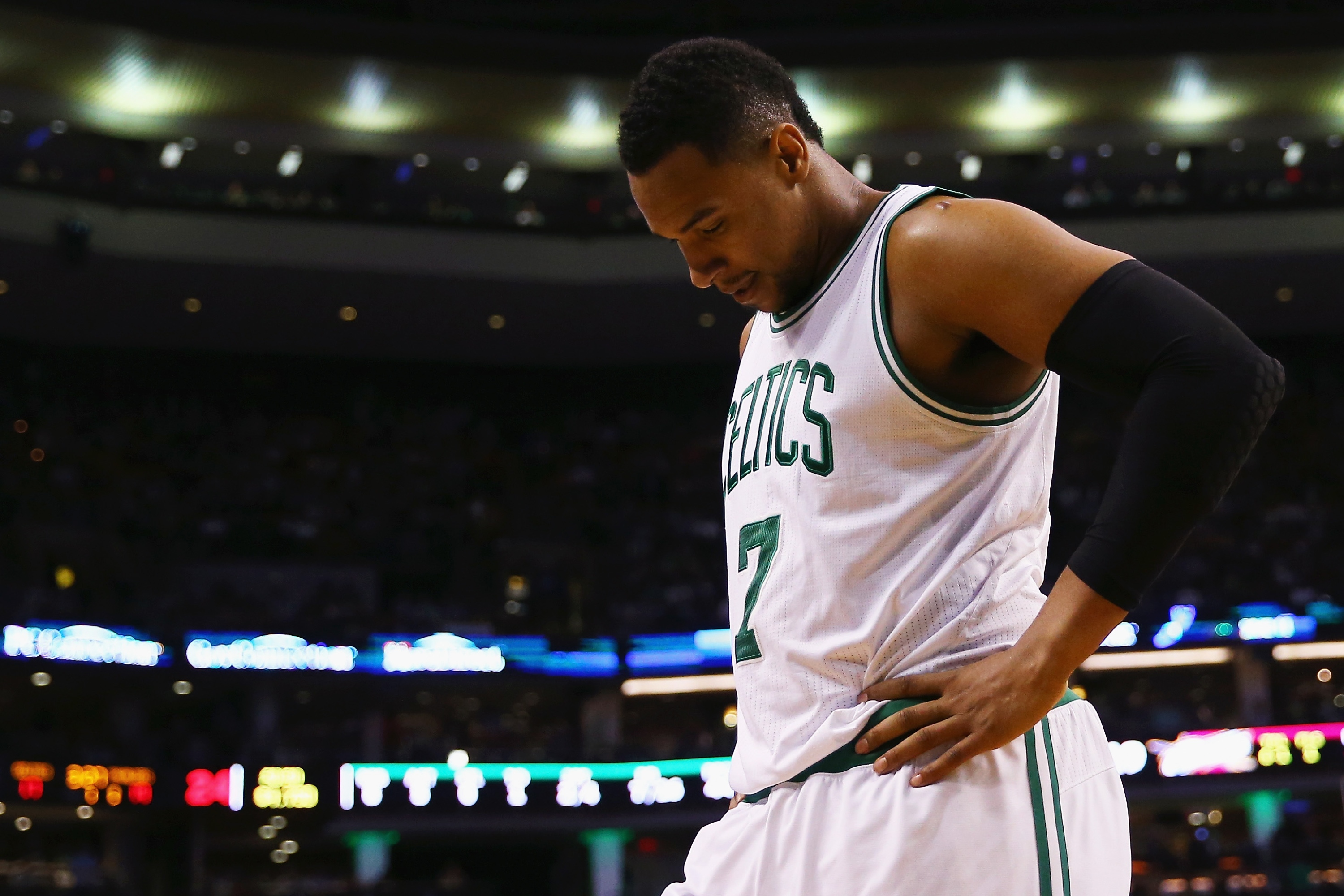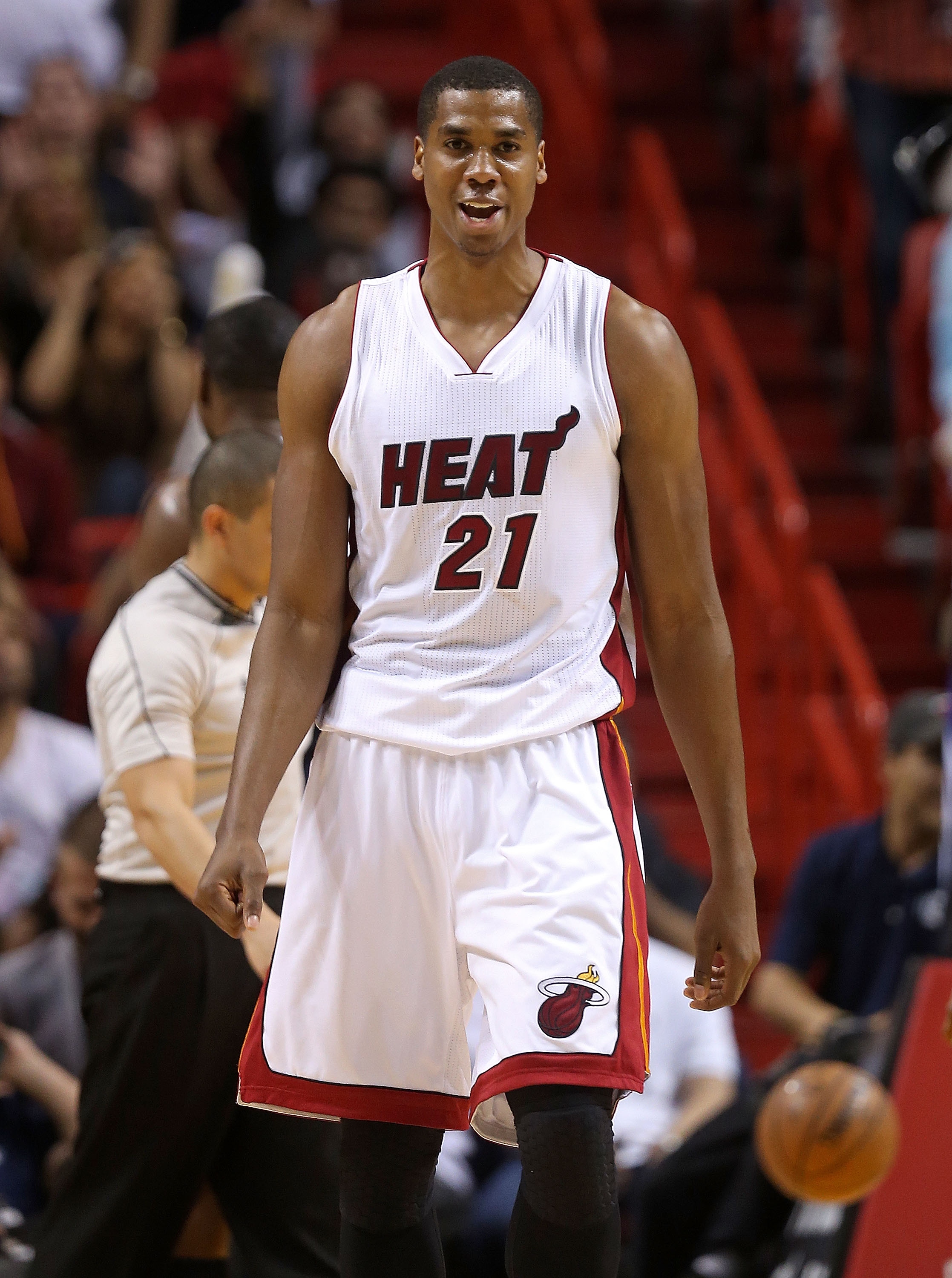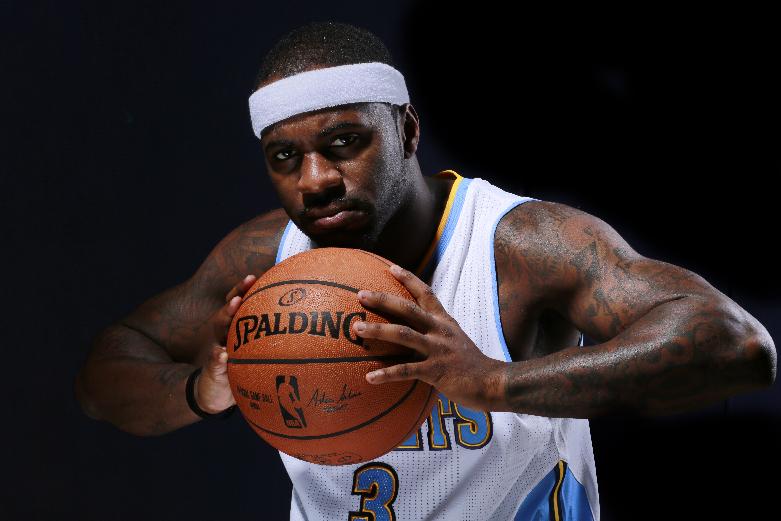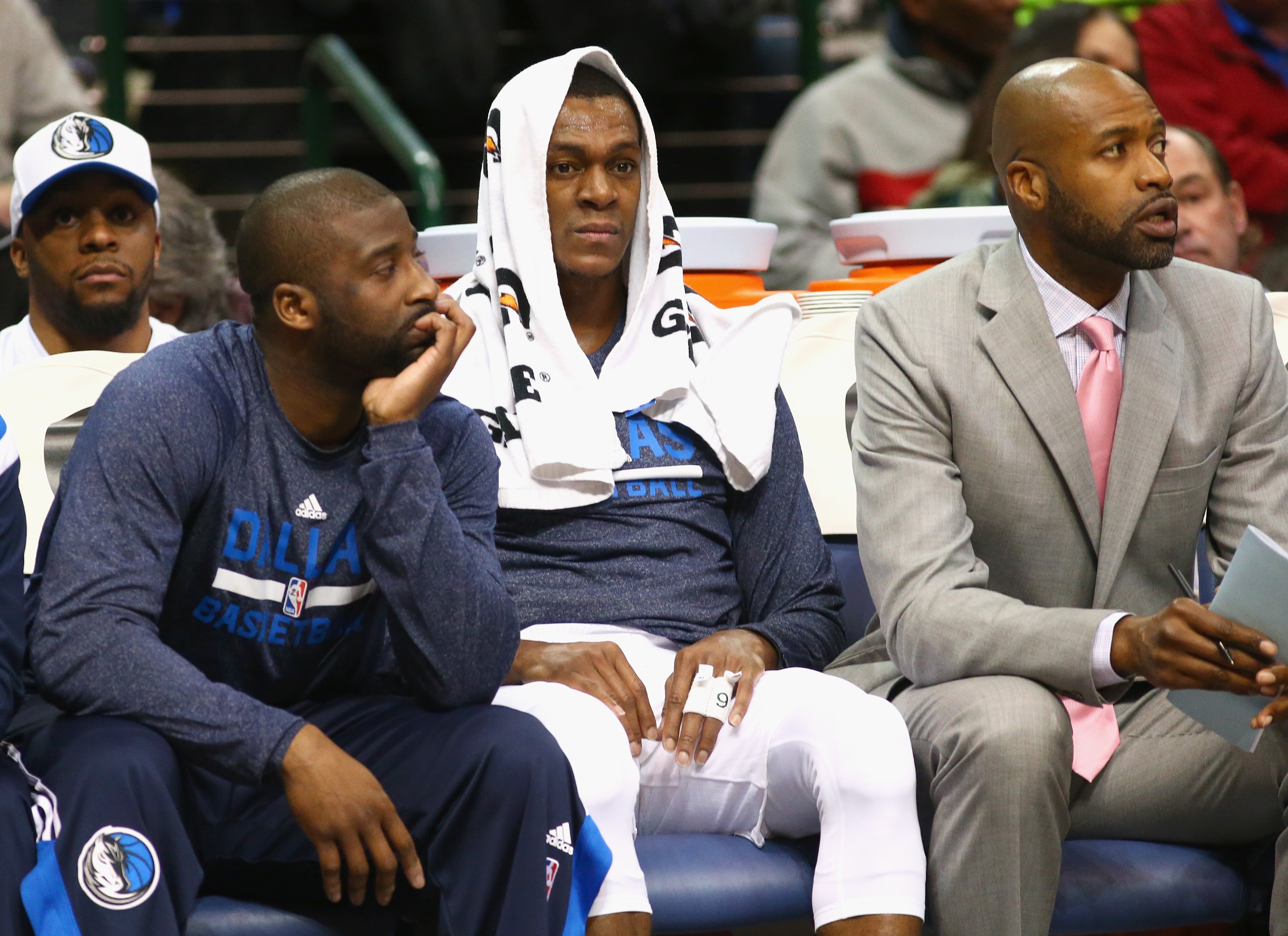Ball Don’t Five: Top 5 players entering a make-or-break season
As we continue to work our way through the endless summer between the Finals and Opening Night, we’ll pause each Friday to briefly consider and count down some NBA-related topic of note. We like starting lineups and round numbers, so we’ll run through a handful of items each week. With a nod to our friends at Dr. Saturday, welcome to Ball Don’t Five.
This week’s installment: The Top Five Players Entering a Make-or-Break Season.
[Follow Dunks Don’t Lie on Tumblr: The best slams from all of basketball]
NOTE: I considered Kobe Bryant and Dwyane Wade, two injury-plagued superstars closer to the end of their careers than the onset, but their legacies are firmly intact. Derrick Rose came to mind, but he’s owed $21.3 million next year, and while this season is important, he could only be broken, not made. Likewise, Anthony Bennett, who along with the rest of the 2013 NBA draft class remains under contract through 2016-17, could be made but not broken. So, instead I focused on the five players with the greatest discrepancy between what they stand to gain or lose in 2015-16.
5. Dion Waiters: Cast aside by one contender, the 2012 fourth overall pick will be offered an opportunity to prove his worth on another title favorite this season. Thus far, Waiters has proven no more than a shoot-first guard who does not shoot all that effectively, which offers little value in a league that has begun to figure out that a career 14-point scoring average doesn’t mean a whole lot when a) it takes him 13 shots to get there and b) he’s giving up more than he’s getting on the other end.
When the Thunder dealt a protected first-round pick for him in January, they hoped he’d fill at least a portion of the hole left by James Harden in 2012. Waiters then submitted a 45.5 true shooting percentage in Oklahoma City, which, if projected over a full season, would have tied Trey Burke for the worst mark among players who averaged 30 or more minutes in 2015-16. Teams won’t exactly be lining up for his services in restricted free agency next summer after another season like that.
Still, Waiters is 23 years old, and his scoring chances should improve with the presence of a healthy Kevin Durant, Russell Westbrook and Serge Ibaka. Even if the same case was made when he played alongside LeBron James, Kyrie Irving and Kevin Love, it doesn’t make the argument less valid. For the record, 80.4 percent of Waiters’ looks were “open” on the playoff-bound 2014-15 Cavaliers, compared to just 47.5 percent on the lottery-bound 2013-14 edition, per NBA.com/stats.
If that’s the case, Waiters must start making those shots, since he certainly did not last season, when he shot 39 percent when considered either “open” or “wide open.” He also has to commit to defense, making for a whole lot of ifs this season — the most powerful of which could be: What if Waiters realizes his considerable potential in 2015-16, becomes the scoring option OKC has so desperately lacked these past few years and helps the Thunder to a title? How much would he then command in restricted free agency when the salary cap spikes $20 million next summer?
4. Jared Sullinger: As he’s chronicled on Twitter, Sullinger is spending the offseason attempting to improve the conditioning that Celtics president Danny Ainge all but blamed for the power forward’s second season-threatening injury in three seasons. Which is probably why he seems intent on foregoing an extension this summer in hopes of cashing in during his restricted free agency in 2016.
That’s risky business for an undersized and overweight big man who fell to No. 21 in the 2012 draft due to health concerns, had his rookie year cut short by back surgery and missed two months of last season with a foot fracture. And while he did return to average 20 minutes off the bench in Boston’s quick first-round playoff exit, Sullinger has never proven capable of playing starter’s minutes even when healthy.
Toss in off-the-court concerns, which have ranged in severity from being benched for tardiness twice in the span of three games last season to a domestic violence arrest in 2013, and it’s not too difficult to see why the Timberwolves weren’t enticed by Ainge’s package of Sullinger and picks during the Kevin Love sweepstakes.
Yet, Sullinger’s potential remains. Over the past two seasons, his averages of 13.3 points, 7.9 rebounds and 1.9 assists translate to 17.5, 10.4 and 2.5 over 36 minutes, encouraging should his conditioning improve. With fundamentals and footwork drilled into him by his coaching father as a youth, he is skilled both as a scorer, shooting 60.6 percent in the restricted area and 47.5 percent from 16-24 feet, and as a rebounder, grabbing an above-average 16.4 percent of available caroms.
The biggest problem beyond his waistline has been his 3-point shot, since Sullinger’s 28.3 percent shooting from distance in 2014-15 ranked as the worst mark among bigs who attempted at least three triples per game. Should he add even an average long-range shot to an improved physique, there’s a real chance he could blossom into a 20 and 10 guy for a playoff-bound Boston team this coming season, which would be an awfully attractive stat line for teams shopping next summer.
[Yahoo Sports Fantasy Football: Sign up and join a league today!]
3. Hassan Whiteside: We chronicled Whiteside’s sudden rise from D-League journeyman to NBA dominance in great detail this past January, and 10 months after his Heat debut we still don’t know whether the 7-footer is closer to zero or hero.
He submitted 36-minute averages of 17.8 points (62.8 field goal percentage), 15.2 rebounds and 3.9 blocks last season, ranking second in rebound percentage behind DeAndre Jordan and third in block percentage behind Joel Anthony and John Henson, which arguably makes him the league’s most underpaid player at $981,348.
It sure looks like the 26-year-old is here to stay, and his development should only benefit from the presence of a talented veteran core and a two-time champion coach. But it’s hard to forget four seasons from 2010-14 in which he proved not to be an NBA-caliber player and only consider last year’s 48-game sample size. The maturity issues that followed him from Sioux Falls, S.D., to Sichuan, China, and just about everywhere in between also reared their ugly head again late in 2014-15. He was twice ejected for separate scuffles with Phoenix’s Alex Len and Boston’s Kelly Olynyk, leading to some harsh criticism from teammate Dwyane Wade.
One season stands between Whiteside and an eight-figure annual salary, whether in Miami or another NBA city, but no one knows better how much can change in a year.
2. Ty Lawson: This one’s fairly simple, really. Lawson’s second DUI arrest in six months ensured his exit from a Nuggets team that was already listening to trade offers for their borderline All-Star point guard, but the Rockets would only agree to a deal if he removed the guarantee from his $13.2 million salary in 2016-17.
Equally desperate to leave Denver and excited about the possibility of playing with James Harden and Dwight Howard in Houston, Lawson conceded, allowing Rockets GM Daryl Morey to cut ties with him should his off-court troubles persist.
On the court, there are few point guards more talented than Lawson, who ranked among the league leaders in minutes, assists and offensive win shares in a season in which he was arrested twice. Imagine what he’s capable of if properly motivated, and that’s what Morey was doing when he parted with a first-round pick for him.
If Lawson learns from his mistakes, he ensures himself of a $13.2 million paycheck next season and possibly more in the form of an extension. But you would’ve thought he’d learn his lesson in August 2008, when he pled guilty to underage drinking and driving; or later that year, when he was arrested on domestic violence charges that were later dropped; or in 2013, when he was arrested during another alleged domestic dispute; or in January, when he was arrested for suspicion of drinking in driving; or last month, when he was again arrested on DUI charges.
You get the point.
1. Rajon Rondo: Now, we could make the argument that Rondo, like Rose, is already a “made” man in the NBA, and thus shouldn’t be included on this list, but there are few players with more to prove in 2015-16 than the current Kings point guard.
In 2012, Rondo was the heir to Paul Pierce’s title as The Next Great Celtic, coming off a third straight All-Star campaign and a conference finals in which he averaged 20.9 points, 11.3 assists and 6.9 rebounds opposite LeBron James & Co. Within a year, though, he suffered an ACL tear from which he still hasn’t regained form.
Never the most popular figure in Boston, because of a series of minor infractions that many made out to be major when viewed as a whole, Rondo forever faced criticism about his ability apart from Pierce, Kevin Garnett and Ray Allen. And his knee injury never granted him the opportunity to prove his doubters wrong. Some 18 months removed from the injury, he declined to discuss a max contract extension in favor of exploring free agency, forcing Ainge’s hand, as the Celtics weighed the possibility of losing Rondo for nothing or cashing in his diminished value.
In Dallas, he seemingly found an ideal situation, joining the NBA’s top offense at the time, but the coach-ability concerns that plagued Rondo since his days at Kentucky boiled over to the point Mavericks coach Rick Carlisle benched him for the final three-plus games of their first-round series against the rival Rockets. He hadn’t been much help anyway, and we were left wondering if somehow Jae Crowder had been the best player in a trade that also included Brandan Wright and a first-round pick.
It was an astounding fall from grace for a 29-year-old who belonged on anybody’s lists of the league’s most unique and exciting players just three years earlier. Rather than signing what appeared destined to be a five-year, $104.7 million max extension with Boston or a four-year, $81 million deal in Dallas, Rondo was forced to ink a one-year, $9.5 million contract in hopes of regaining his value in Sacramento.
Yet to find that step that ranked him among the game’s elite point guards, Rondo now rates as one of the league’s worst shooters from both 3-point range and the free-throw line. Given the wealth of facilitators in the NBA now, there isn’t much use for one who can’t create his own offense from the perimeter or in the paint.
It’s impossible to understand Rondo, but he’s always struck me as a guy who wouldn’t take much pleasure in being a backup. Considering his shoe deal with Anta, it wouldn’t at all surprise me if he played in China next year, and I’m not even kidding. Then again, I won’t be shocked if he’s an All-Star again, leads DeMarcus Cousins and the Kings to the playoffs and signs a $100 million deal in 2016. One way or the other, Rondo’s betting on himself, and that’s a game he’s already lost once.
– – – – – – –
 Ben Rohrbach is a contributor for Ball Don’t Lie and Shutdown Corner on Yahoo Sports. Have a tip? Email him at [email protected] or follow him on Twitter! Follow @brohrbach
Ben Rohrbach is a contributor for Ball Don’t Lie and Shutdown Corner on Yahoo Sports. Have a tip? Email him at [email protected] or follow him on Twitter! Follow @brohrbach



